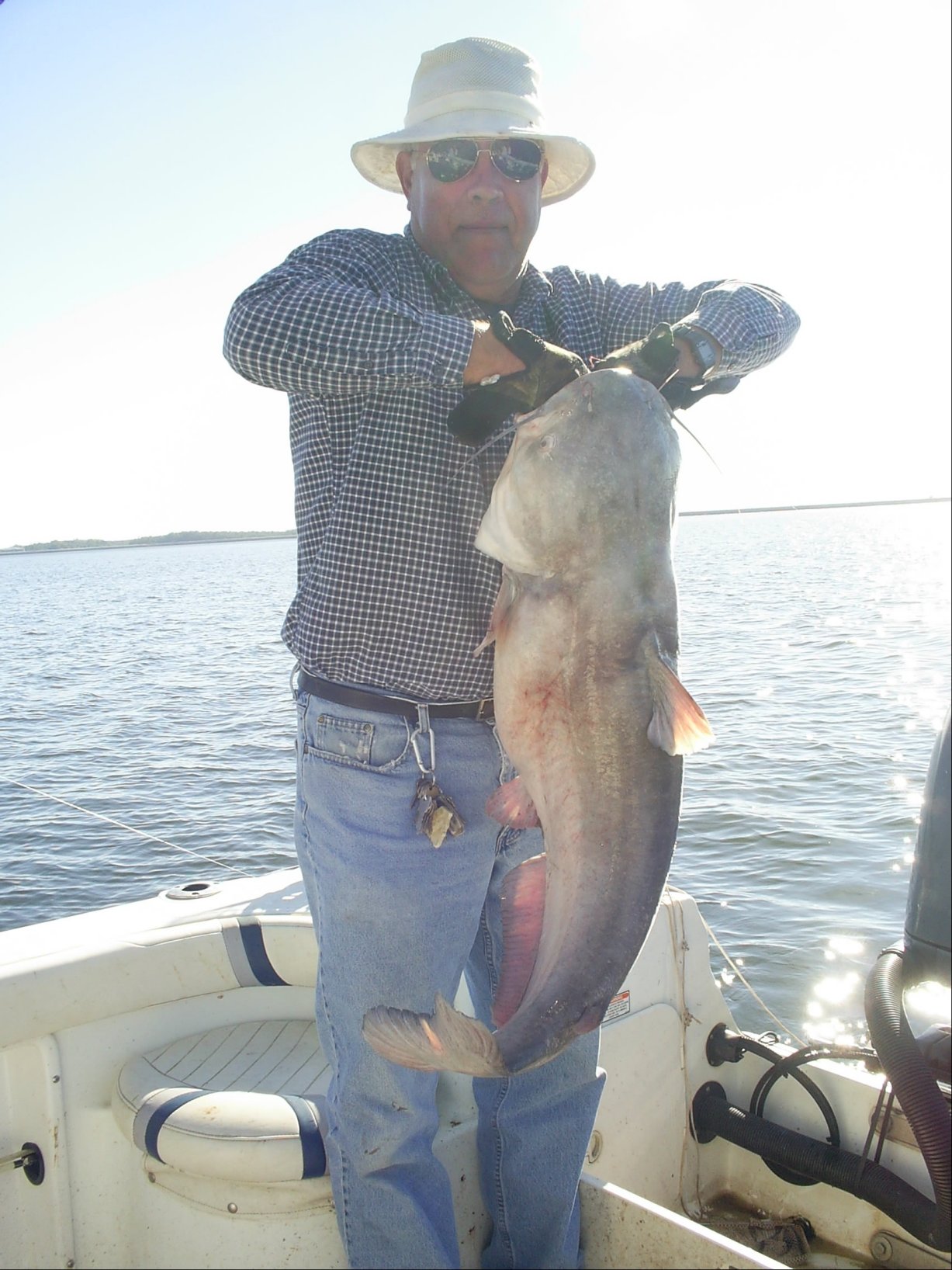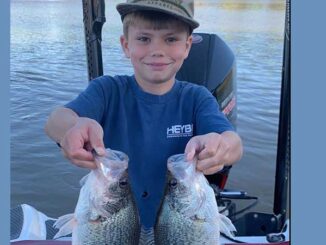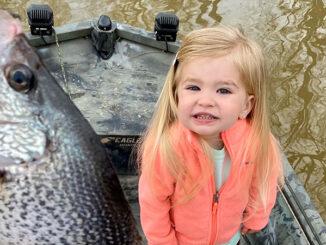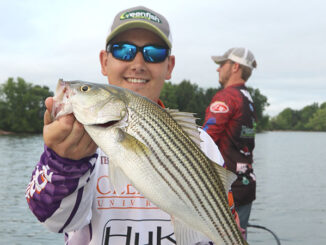
Most people think of the hottest time of year as the dog days of summer, and it may also be the hottest time to snag a big catfish on South Carolina’s Lake Monticello, according to guide Chris Simpson of Greenwood.
And, Simpson said, the hottest part of the day is the perfect time for the hottest fishing.
“The most-miserable part of the day is when I have caught lots of the biggest fish I’ve caught,” he said.
The reason that time of day produces up to 70 percent of the action on big blue catfish, Simpson said, is because mid-day is when the hydroelectric plant’s pump-back operation stops pumping water into the lake and starts pumping it back out.
“That generates power for the hottest time of the day when air conditioners are running the most, and that causes the currents to shift, which makes the fish change up,” he said.
All three basic fishing methods will produce big blue catfish this month, according to Simpson (864-992-2352): anchoring, bottom-dragging drifting and free-line drifting.
“It just depends on what method you are more comfortable with,” he said. “If anchoring or bottom-dragging drifting, target depths from 15 to 65 feet. Anchoring and fan-casting to these depths works well, and drifting over humps and points in that depth range also works.”
Simpson said those two methods usually won’t provide quite the number of bites as free-line drifting, but the bites you get will often be larger fish.
“Free-line drifting provides more action from small fish, and although not as consistent as anchoring or bottom-dragging for big fish, it still will produce a big fish or two from time to time, along with a cooler full of 1- to 10-pound fish,” he said.
“A large number of blues suspend on Monticello, and a majority of them will be literally from right under the surface down to about 15 feet below, so you’ll want to have your baits in that depth range. You need to keep moving at least 0.5 mph to keep the baits in the strike zone and out of the tops of the trees, so a trolling motor is often needed on days with no wind.”
A variety of baits work for free-line drifting, Simpson said, including small pieces of perch, bream, herring, shad, chicken breast or stinkbaits. But for targeting bigger blues, he prefers hardy pieces of white, perch, bream and big gizzard shad so the smaller fish can’t tear it off the hook.
Catching that current change is key, even if it means fishing the time of day when most have gone to the hill to escape the summer heat.
“It can be really miserable to sit out there in the heat in the middle of the day, but it can pay off in a big way if the right fish hits,” said Simpson.




Be the first to comment